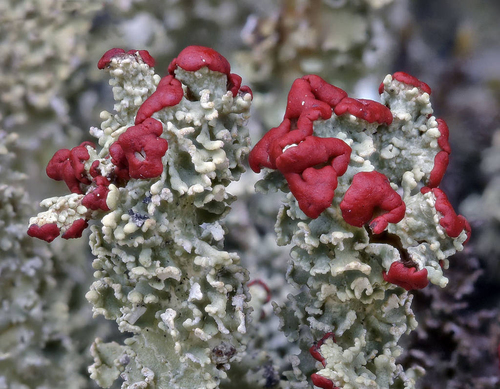Click on Characteristic name for explanation. Click on image for larger version.
|
Cladonia bellidiflora
| Overview
| | PNW Range: | | | West side | Occasional
| | East side | None
| | Immediate coast | Rare
| | Alpine or subalpine | Rare
| | Habitat: | Most frequent on cool, moist talus slopes, outcrops, and old lava flows; occasional in forests and sand dunes.
| | Substrate: | On mossy rocks, less often on bark, wood, and soil.
| | Comments: |
| | Synonymy: | none
|
|

Habit
|
|
|
|
|